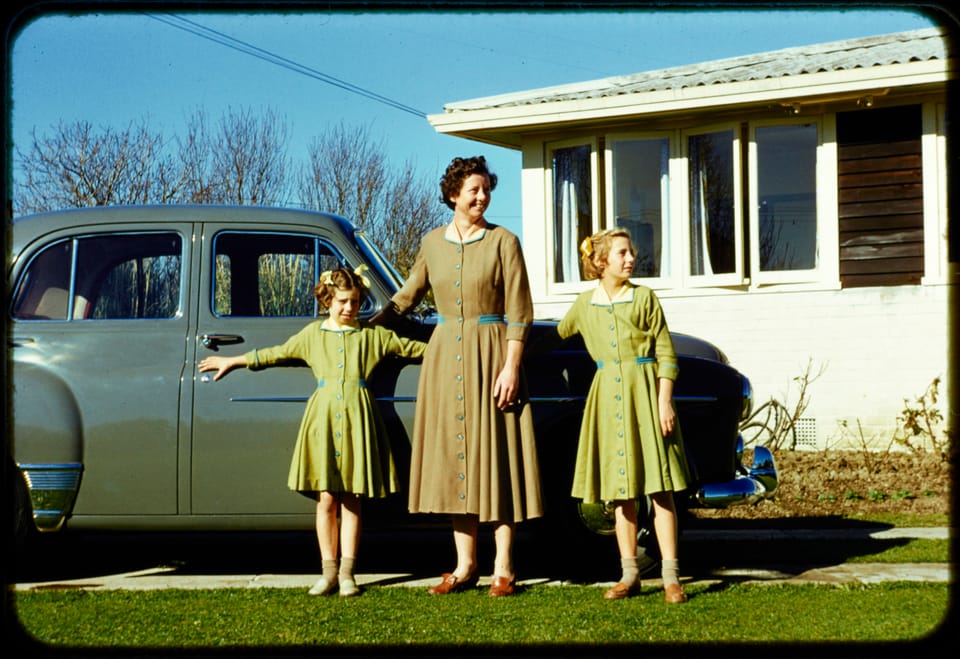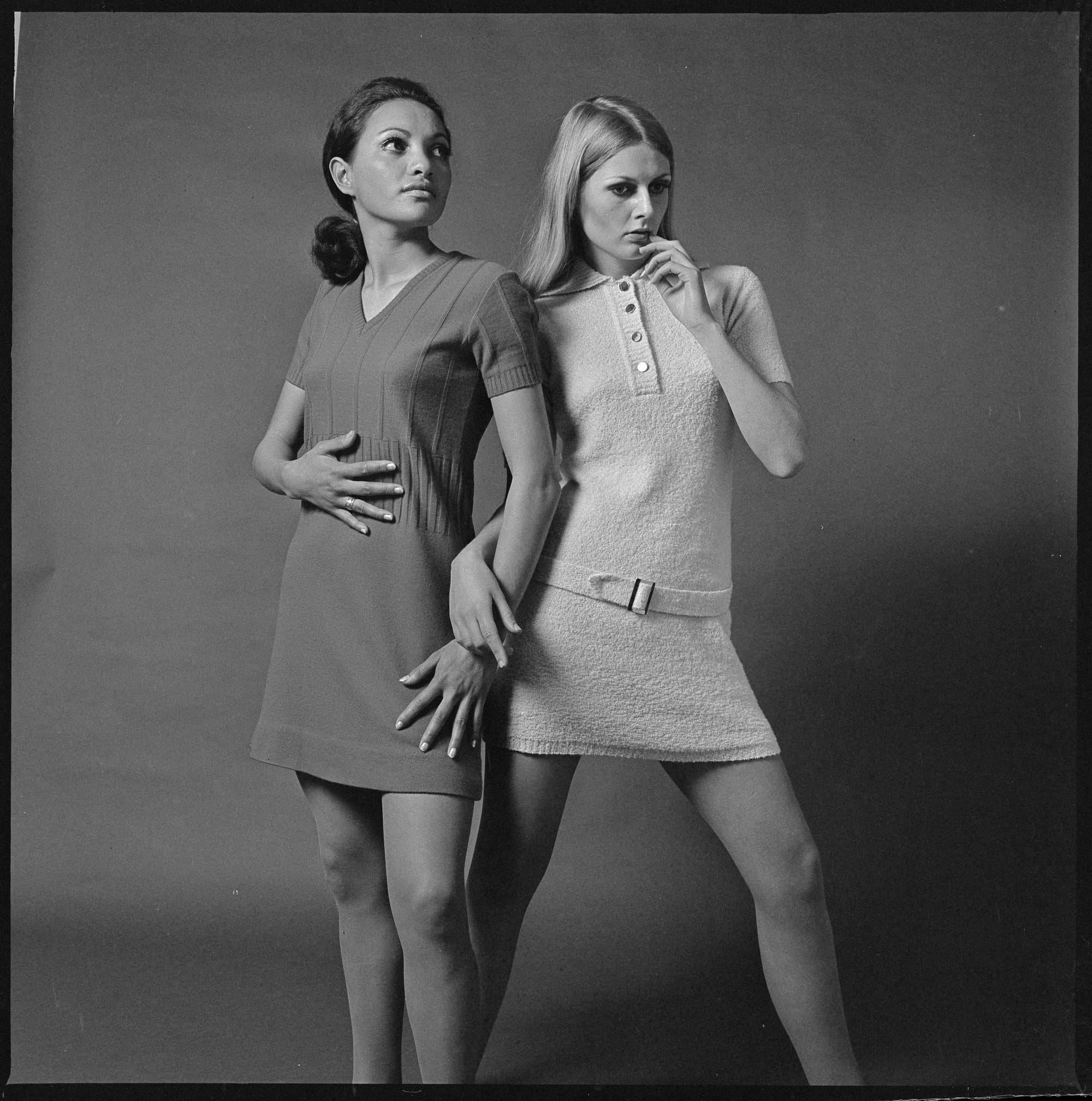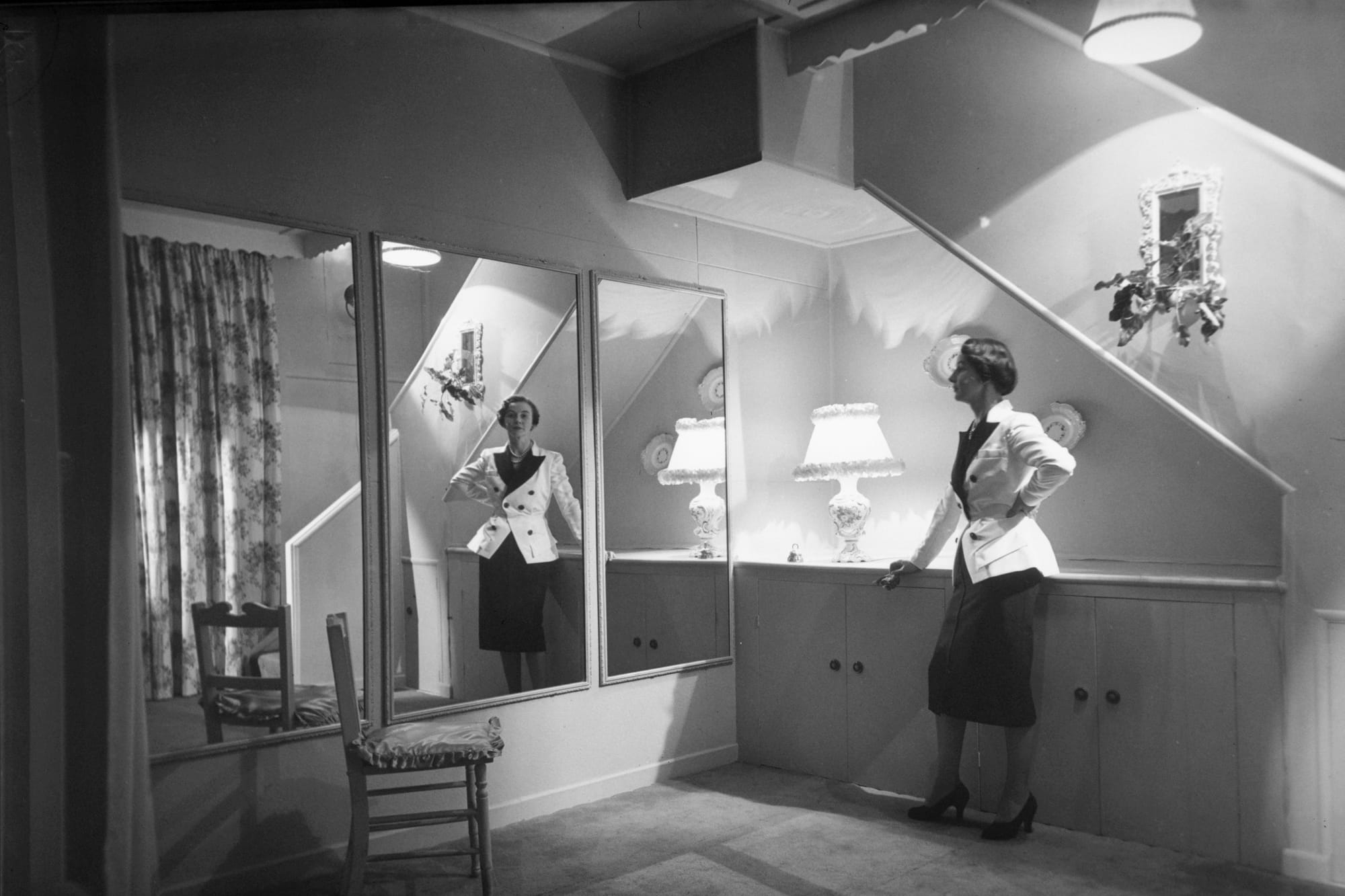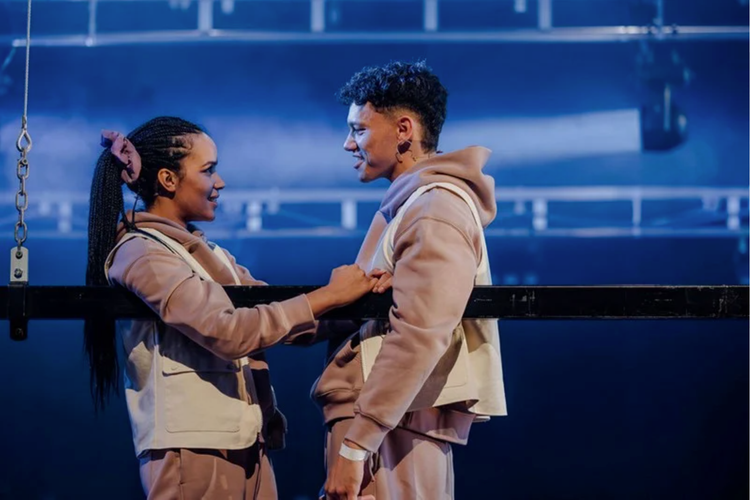What it takes to curate an exhibition at the library

A quick Q&A with Auckland Libraries associate curator of ephemera Zoë Colling on the library’s latest exhibition That’s So Last Century, about fashion in Tāmaki Makarau between the 1950s and 1990s.
How long does it take to get an exhibition like That's So Last Century together, and how much forethought and planning goes into it?
It usually takes around six months to plan an exhibition. Librarians who work as part of an exhibition curatorial team have other day-to-day work on top of exhibition work, like helping answer customer research enquiries or working on describing collections so they can be accessed by the public.
We like to be able to have a range of exhibition themes over a one or two year period so different audience groups are focussed on, a range of our collections are displayed (last year we had a popular exhibition featuring nine of our medieval manuscripts – very cool having 500-year-old-plus items on show), and a variety of topics are chosen so different librarians can work on exhibitions in a staggered way.
We also choose topics which suit our collection strengths. As the material in Auckland Council Libraries Heritage Collections is non-circulating, our exhibition room is like our shop front. It is a way for people to learn more about what we hold and be introduced to the range of formats we care for: photographs, ephemera, maps, rare books, music, newspapers, magazines, oral histories, and manuscripts.
To get a sense of the scale, how many items were you working with to potentially include in the exhibition?
The curatorial team looked at thousands of photographs, many accessible via Kura Heritage Collections Online, over a hundred magazines and pieces of ephemera, one manuscript collection, and about a dozen books and LP records. We started off with the very broad topic of ‘fashion’ which we knew we needed to whittle down.
At the outset, we wanted to include a wide range of magazines from our collection, including Cha Cha, Planet, Eve, and Thursday, which all featured in a short documentary video our colleagues created. We knew the exhibition would include Rykenberg street photographs and the glam Clifton Firth 1950s studio portraits. We decided it would be great to include the 1990 Project images. One of our first decisions was to limit the time period to the 1950s – 1990s. We were also keen to show a culturally diverse range of people and to represent what everyday people were wearing, not just high fashion.

What kinds of conversations do you have to have when you begin to narrow it down?
The task of narrowing down a broad exhibition is an iterative process. The curatorial team must physically look at collections and what works together at the same time as they are thinking about options for narrowing things down. So, we are physically retrieving material, assessing it, and thinking about ways to limit the scope. A photograph and double-page spread from a magazine need to complement each other inside a display case and work with all the other content in the exhibition as a whole.
At first, I thought it could be fun to take a very surface approach and have cases that focus on persistent fashion pattern trends – spots, stripes, animal print, floral, tartan – with examples from several decades.
After chatting with other people in the curatorial team we thought a social history focus, looking at topics like clothing manufacturing and home sewing, would be a good way of showing other ways the garment industry impacted on workplaces and the daily lives of people during that time. Initially we were thinking about a more nationwide focus and including more rural clothing. When we were physically looking through items, our choices ended up being more Tāmaki Makaurau focussed and more urban-centric though.
What part of the exhibition took the most time to put together?
It took us quite a while to figure out what images we would have on the walls. Originally, we thought we would have one stand out image that showed an iconic fashion trend for each decade printed at a large size. Finding a suitable image for the later decades was tricky, so we shifted those images to a different part of the room. We decided to have sixteen of the Rykenberg street photographs on the main long wall instead.
The curation, in general, took a lot of time, partly because we had so much material to choose from. One display case that took quite a long time to finalise was the ‘Inspiration’ one where we highlight one magazine from each decade – from the 1950s to the 1990s. We wanted to make sure whichever cover or spread we chose included an excellent fashion example for that decade and it took time figuring that out.

What's your favourite item in the exhibition?
It’s hard to choose one and I think I have chosen something different each time I have been asked!
I love the variety of ephemera on display, like the 1961 lubrication chart for an Elna sewing machine with all its technical details and neat design. I love the Aaridjah LP cover where Betty-Anne is wearing a hot pink vest with very impressive shoulder pads.
The Rykenberg street photographs are a definite favourite of mine. They were all taken on Queen Street, Auckland, in 1960. Lots of people are dressed very smartly, there’s such a good variety of fashion choices, and you can spot great accessories like shopping bags, hats, and gloves. John Rykenberg and his team of photographers took images of a wide range of people, so you end up with a great snapshot of a time and place.
What kinds of conversations and consultation do you have with experts to help curate the exhibition?
The main conversations we have are with specialist librarians in our team – these are the people who know their collection areas incredibly deeply and are able to point us to collections or items we may have no idea about or which may not appear in a catalogue or database search.
We relied on histories written about twentieth century life in New Zealand, shops, fashion designers, localities, and magazines to help our research. As well as looking at local histories and New Zealand photography books. Te Ara and the New Zealand Fashion Museum publications and website were fantastic sources for us.
What excites you the most about having the public along to see this exhibition?
What excites me most is having potentially new audiences introduced to our incredibly varied and important heritage collections. Not everyone is aware the library holds material like glass plate negatives and gig posters, or that we have an exhibition space and digitised collections. It’s been lovely seeing groups or pairs of people coming in to see the exhibition.
We have noticed quite a few mothers and daughters coming along. I spoke to a mum who had spotted a friend in a 1980s issue of Cha Cha magazine we have on display. It was in a feature showing what people were wearing on the street. The person was telling her daughter a bit about Auckland in the 80s and was explaining that the friend in the photograph was wearing a (very rad) sailor suit she had designed and made herself. It was cool and special to talk with them and hear them chat and interact with the exhibition.
That's So Last Century runs at the Auckland CBD Library until Saturday July 27.

Member discussion